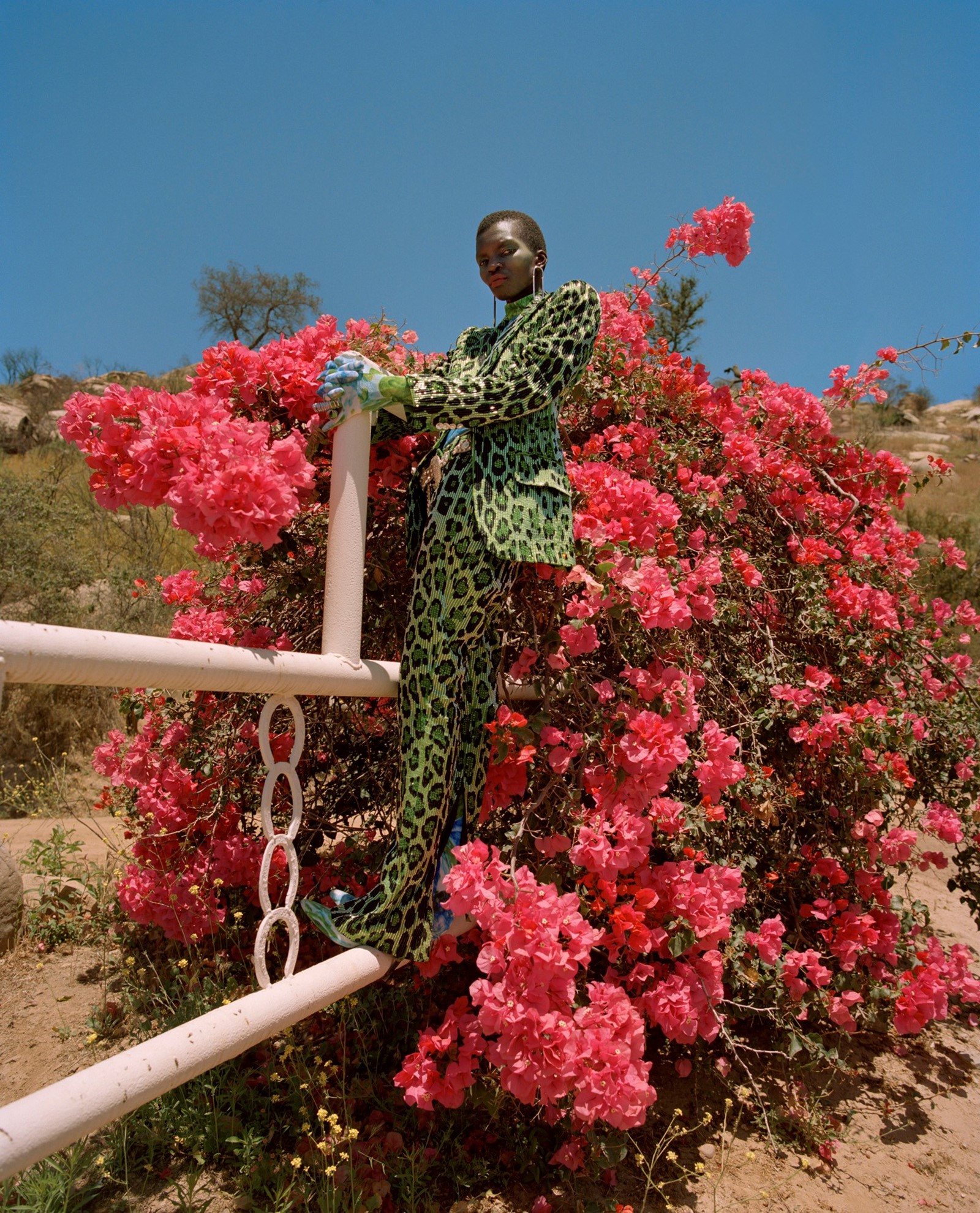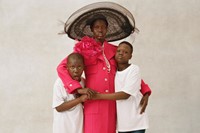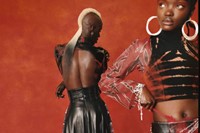There’s an unspoken bond shared between Black creatives working in fashion. Raised on the mantra of ‘work twice as hard, for half the reward’, we each intimately understand the uphill climb we’ve endured to make it in the industry.
An ever-growing family, spotting one another across the runway at a show or party brings a sense of joy and comfort, akin to meeting a cousin you didn’t know you had for the first time. Nadine Ijewere and I have a similar connection, though we don’t know each other well. While I don’t remember the first time I came across her work, I remember its reassuring sense of familiarity.
At the start of 2020 before chaos ensued, Nadine and hairstylist Jawara collaborated on Tallawah – an exhibition with Dazed Beauty that celebrated the enduring power of Black hair. I interviewed the duo at the time and clearly remember being stopped in my tracks by one image in particular. Photographed on locals around Jamaica (a place both creatives have familial ties to) an older woman – with architectural hair wizardry by Jawara – looked almost identical to my late grandmother. After the initial shock, I realised with a twinge of sadness that I’d never seen an older Black woman portrayed in that way.
Nadine’s photographic oeuvre is just as vibrant and full of life, a mouthwatering confectionery of colour that draws on her dual Nigerian and Jamaican heritage. It’s easy to imagine that every day in Nadine Ijewere’s world is bright with sunshine and joy. Representative because it just is and not because it has to be, the photographer creates the images she dreamed of as a young Black woman growing up in south-east London.
It’s entirely unsurprising then, that after a short but impactful career, Nadine is already releasing her first book – Nadine Ijewere: Our Own Selves. Featuring a myriad of fashion editorials and work for brands including Dior, Hermès and Valentino alongside portraits of locals in Jamaica and Lagos, it’s an opportunity for both us and her to reflect on her boundary breaking career as the first Black woman to shoot covers for both British and US Vogue, capturing Dua Lipa and Selena Gomez respectively.
Ahead of the book’s launch, Nadine and I discuss her work to date, the ongoing importance of Black representation in fashion, and the next chapter of her career.
Dominic Cadogan: I was reading the opening essay in your book – written by Dazed’s executive editorial director Lynette Nylander – and she mentions that it’s not surprising that you’re already reflecting over your career. I couldn’t agree more. What made this the right time for you?
Nadine Ijewere: It has been something I’ve thought about before, but I didn’t think it would happen until later in my career. The publisher got in touch with me and initially I wasn’t sure because I didn’t think I’d been doing this long enough, but in the end I decided it would be nice. I can still have other books, but the timing for this one is actually perfect because it’s so nice to acknowledge that this is a journey, rather than my career being over if I did it further along the line. It’s really exciting to spotlight the journey and where I’ve come from.
In life, we rarely take a step back and remember and reflect on what we’ve done, so doing this book has enabled me to do that and look over all my work so it’s quite sentimental. You remember what happened on a certain day or the people you were working with and I think that adds to the creation of the image.
Looking at these images, I wish that I saw these kinds of images and people that looked like me when I was growing up. It’s such an important thing and it’s exciting that there are more Black creatives now using their culture and heritage to create amazing images that can be used for research or reference because it wasn’t necessarily available for me. Even now, it’s in a questionable quantity and finding images for inspiration is quite difficult, but it’s nice that the images we create can inspire the next generation.
DC: You’re obviously a very visual person, so I’m interested in what your process was for selecting images and how you see them working together as one?
NI: The first thing I did was get all of my work printed out and spread out in front of me. As a visual person, I’m drawn to certain things together – similarly to how you compose an image. That’s where it started and it progressed from there.
I knew I wanted the book to be full of images, like a celebration – a celebration of different types of beauty and the women I’ve grown up around. So, there are elements of beauty, hair, skin tones, and make-up. I just wanted it to be positive and to put something positive out there.
“Positivity is important because for so long there have been negative connotations around the Black community and Black women and it’s something that we don’t really see celebrated or portrayed in a beautiful way” – Nadine Ijewere
DC: I always find that when Black people are in control of their narrative, they focus on positivity and joy, instead of the trauma and negativity that is usually the focus.
NI: Positivity is important because for so long there have been negative connotations around the Black community and Black women and it’s something that we don’t really see celebrated or portrayed in a beautiful way. In the past, when you did see women of colour, there was always an element in place to make them conform to what the beauty ideal was – whether it’s straightening their hair or lightening their skin. It’s important for me to reframe that and show women of colour in a positive light, that’s what my work is all about.
DC: As a Black creative, race is obviously an inherent part of your work, but your images are so beautiful and vibrant too. Is that something you also think is integral?
NI: That’s definitely a big element that comes into it. As an image-maker, I’m drawn to colour and images that are more dynamic. With my images, there’s always a sense of movement and that’s always been important, so there are lots of different layers.
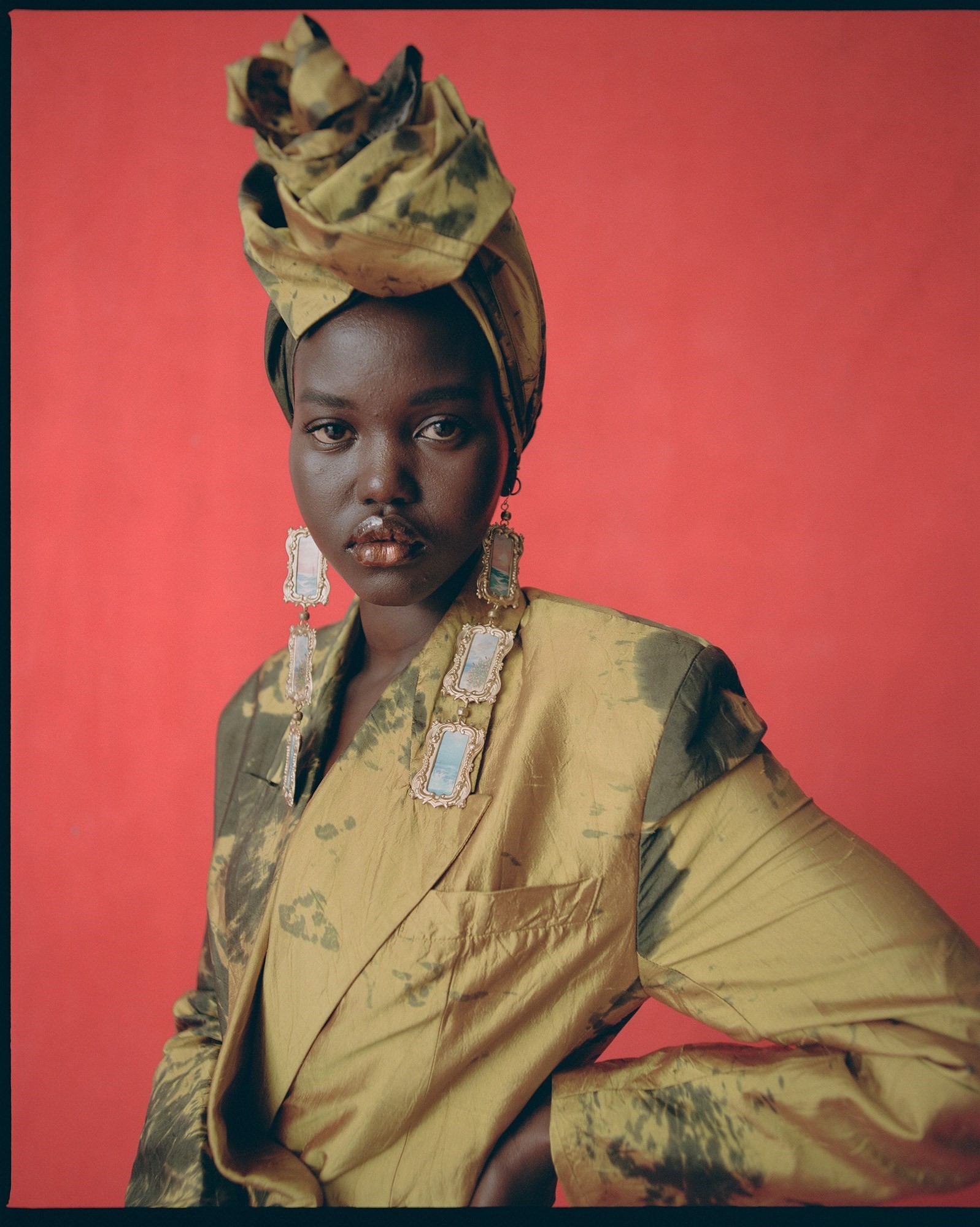

DC: What kind of impact do you think having images like this growing up would have had on you?
NI: I would have been a lot less self-conscious because growing up, I was always the sort of person who tried to fit in and change something about me. My hair was a big issue because I grew up in an environment that was predominantly white and went to a school that was the same so I was always trying to assimilate to fit in.
I would straighten my hair a lot and would wear weaves and extensions instead of my natural hair because in fashion and beauty you never really saw girls with tight curls or Afro-type hair being portrayed as beautiful. If you did, it would be the images in Black hair salons of girls on relaxer kits with silky, straight hair. It was the image that was constantly shoved in your face, so of course you felt insecure because that’s not the hair you had. Even protective styles which are natural like cornrows and braids were seen as not beautiful or unprofessional.
You become very restricted in a sense and you lose your sense of identity because you’re trying to fit in and be somebody else. I struggled with that for years, but having images like the images I see now would be incredible because it shows beauty as being multifaceted, there’s different kinds of elements and layers to it. It shows it in a different way and celebrates it across the board and that’s super exciting.
DC: It’s not just your images that have an impact on young Black creatives, but your career itself too – particularly history making moments like your covers for American and British Vogue. Why is it important for Black people to be visible in this way?
NI: It’s important to show there is space in these kinds of ‘prestigious’ spaces and can tell our stories there. For example, being able to do the ‘Auntie’ story in US Vogue. For me, it was such a pinnacle moment because I never thought I’d see a story like that and the people I grew up around, my culture, in US Vogue. Being able to show that our stories too can be within the pages of these publications and are beautiful and represent us and what we’re about. We do have a place within these spaces and within these pages.
“It’s super important to work with teams of specialists in stories around cultural identity ... Our intimacy with the experiences means we want to portray it in an authentic light and in a positive way” – Nadine Ijewere
DC: Working with other Black creatives is something that I’m sure is a natural part of your process, but why do you think it’s important for authentic storytelling?
NI: It’s super important to work with teams of specialists in stories around cultural identity, working with people like Gabriella [Karefa-Johnson, who is a stylist] on the ‘Auntie’ story. As two Black women, we share the same experiences and have grown up in those environments – it’s our family and representation on the pages, so it gives us a voice which is so important. Our intimacy with the experiences means we want to portray it in an authentic light and in a positive way.
Whereas I think, something that’s from the outside and comes in, they might like all of the patterns and think it makes a great photograph, but we’re looking at what they represent, making sure the headdresses are done correctly and not because they ‘look cool’ – all of these elements. You don’t want anything to be shown in a negative way, so you’re thinking about it constantly.
DC: I was recently speaking to Ronan Mckenzie recently about her brand Selasi, which you collaborated on. I sometimes think that non-Black people might be surprised about the way we all root for each other rather than seeing it as competition – would you agree?
NI: There definitely has been that kind of mentality before and it’s not our fault; throughout history we’ve been told that there can only be one of us, so I feel like it’s something that ingrained in our heads. There’s this pressure that you constantly have to be on it, but lockdown gave me a chance to step back and realise that we can all be in this space at the same time. I think as creatives we get grouped together a lot because we’re Black, but we’re all different – we have different perspectives and we’re all doing things in completely different ways. The way I view Black women and women of colour through my pictures is very different to my counterparts and that’s exciting because all of those visions come together and help elevate it.
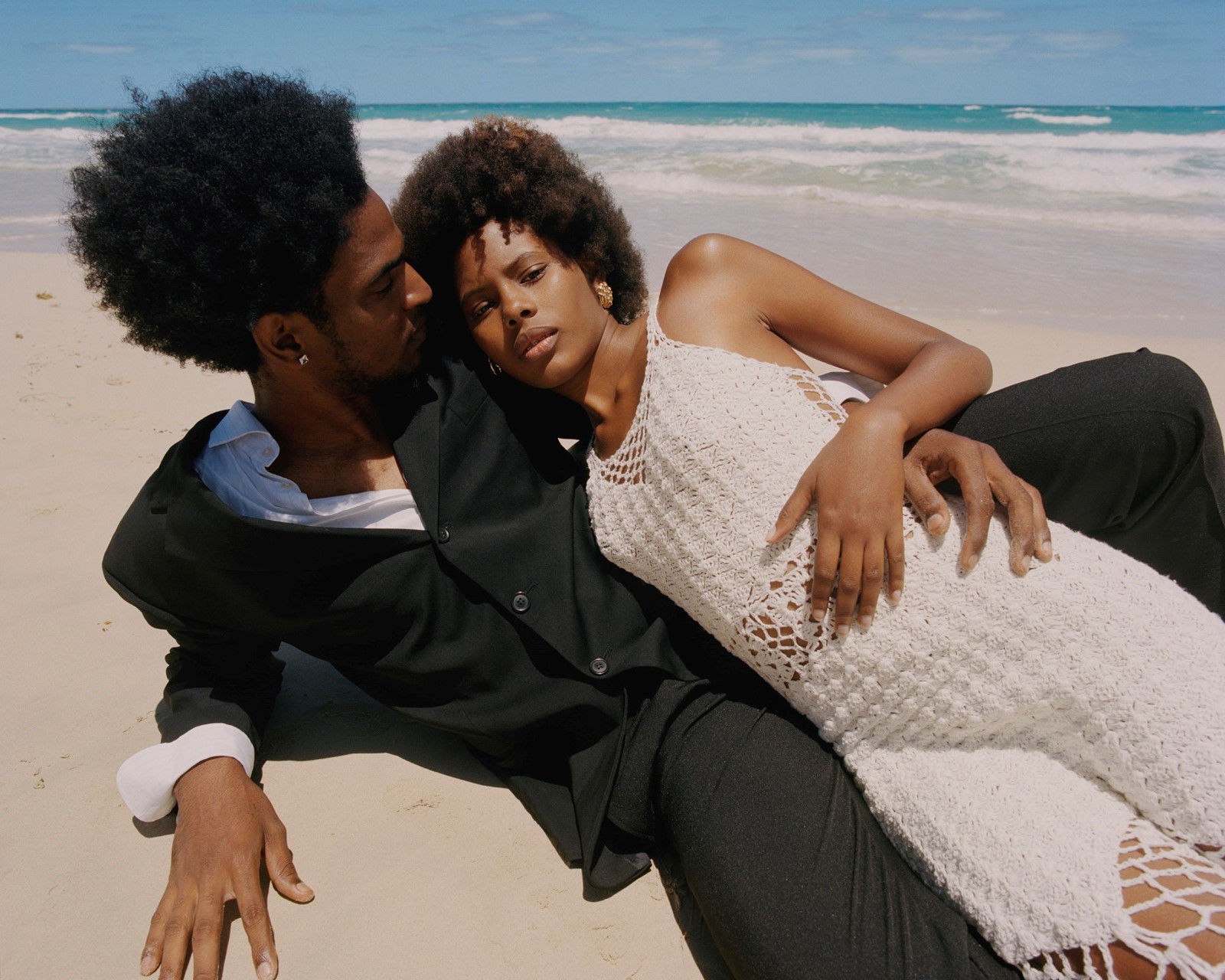
DC: What message do you hope people take away from the book?
NI: I hope that everyone can see a piece of themselves in it. I hope it inspires other creatives who take photographs and shows them that you can work in this industry and there’s space for you. When I started out doing photography, I never thought I could do it as a career because there weren’t any of us in that space and there’s still so few of us. I did it because I loved it and then it turned into my career.
I think a lot of people don’t realise that there is space to tell your story, not just through photography but with art direction and creative direction too. We need more Black people in those spaces too, not just models. There’s more diversity for models, but it’s important to have people telling stories too and I hope this book can encourage others to take that step forward so they’re in that space too.
DC: How are you feeling as you enter a new chapter of your career? Is there a checklist of things you want to achieve?
NI: I’m still creating but I don’t put pressure on myself like I used to, when it happens it will happen. A lot of my inspiration comes from travelling and I haven’t been able to do that, but when I get the chance to travel again I will see things through different eyes and have a different mentality towards it. There are times when you feel super inspired and others when you don’t and I think that’s okay as an artist to take each day as it comes.
Nadine Ijewere: Our Own Selves is published by Prestel, and is out now.
